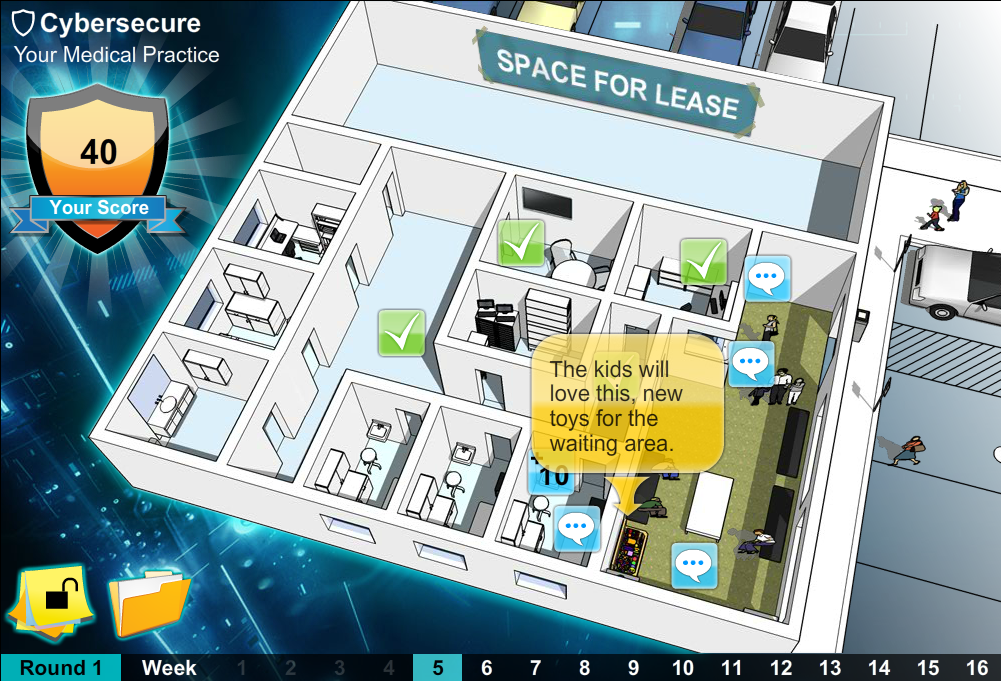Introduction
The game Cybersecure is designed to teach people in the medical profession how to properly handle personal health information that needs to be encrypted and secure. It is a game of the multiple-choice quiz genre.
Below is a detailed analysis of this game roughly following Brian Winn's1 Design/Play/Experience framework, including:
Learning
- Teaching the player proper procedure for protecting health information.
- Teaching the player how to handle situations that may arise when dealing with patient information
- Showing the player potential mishandling of patient information
- Teaching the player to secure their information
Storytelling

The game takes place in a medical pratice. You play as the head of the medical practice.
Your goal is to protect the PHI or protected health information for your practice. This adds some weight to the
decisions that you are asked to make, but overall add very little to the gameplay. Other than that, each event
places the player in a real world situation related to the practice.
Gameplay
The player is given 16 scenarios that they must handle correctly to earn points. The scenarios were broken up into 3 sections,
with 2 sections of 5 followed by a section of 6 scenarios. Each scenario involves a cybersecurity situation and 4 possible
ways to handle it. A player can use the tips to better understand the information the game is trying to teach the player.
Each time a player handles a situtaion correctly, they gain 10 points. The more points the player gets, the better they did
answering the multiple choice questions. As they answer these questions right, thepractice improves and expands, such as
gaining new computers or adding toys to the waiting area for kids. As the gameonly takes 5 to 10 minutes to play, there is
only a limited selection of interaction the player has available. In additionto the questions that the player must answer,
there are other icons the player can click to see small quips realted to themedical practice. This seems to have no benefit to
either gameplay or teaching the player about cybersecurity, but the player still needs to click on all of them to advance to the
next set of questions. This subtracts some from the gameplay itself, but seeing as the gameplay isn't very complicated at all,
it doesn't subtract too much.

User Experience
The controls are pretty simple, in that all the player can do is click on different options. The screen seems pretty cluttered, especially
when a popup appears after answering a question correctly to tell you a change to the practice, blocking the next question until it fades
away after a period of time. Other than that, there were no major issues with the controls or the UI and it was simple enough to understand
easily. They also included a introduction to the UI as well, which helped some.

Technology
The game was made as a Flash-based browser game. This allows for a large target audience, and was more accessible to non-gamers, as some of the target audience may not be gamers. I think the choice worked well for the game and I would not have done differently.
Assessment
I was unable to find any formal assessment of the game. Suggestions I would make would be to check to see what the player knew about protecting PHI before playing the game, and then checking again afterwards in the form of a pre- and post-test. This could be followed up by checking in with the practices later to see if there were an cybersecurity incidents and if so, if they were handled correctly.
Conclusion
This game seems to teach the subject matter is is trying to communicate very well. The only issue with it is that it seems less of a game and more of a quiz with some game-like elements. It isn't fun, but it doesn't necessarily need to in order to communicate the information about practing the health